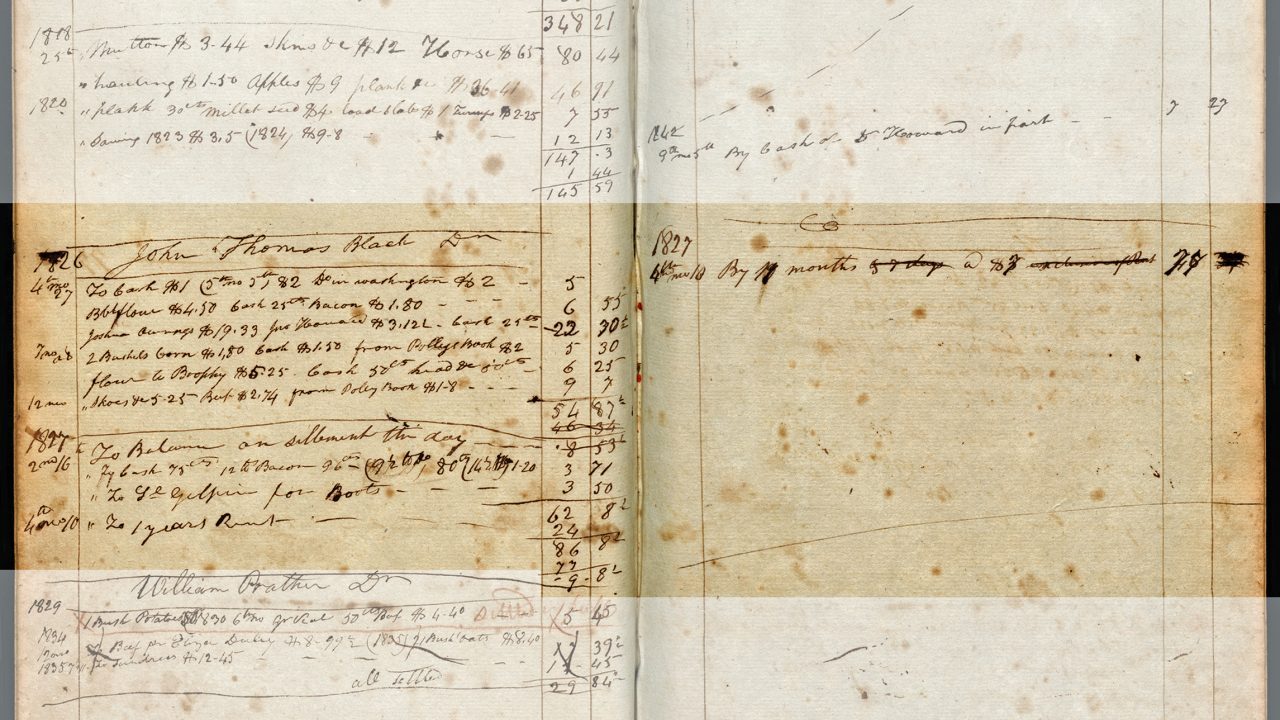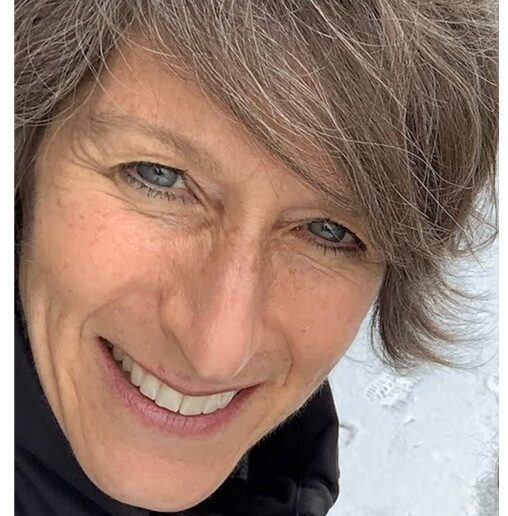
Equity: freedom from bias or favoritism
Metadata: data that describes and provides context for digital items, which in turn helps users find and discover these resources.
Though Black and white residents numbered almost equally throughout the nineteenth century in Sandy Spring, Maryland, the town’s history has largely been told from the perspective of its most prolific white scribes. Over time, racially skewed cataloging practices in archives have perpetuated the dominance of this white narrative, making an authentic Black voice accessible only through serendipity or page-by-page browsing. To redress these inequities, Sandy Spring Museum’s recent reparative cataloguing initiative, Equity in Metadata, centers the stories of the area’s historic Black residents to facilitate a more holistic discovery of Sandy Spring’s socially segregated yet economically interdependent community history. This post discusses what led to the initiative, how we designed the project, and our progress so far.
The Road to Equity
The groundwork for the initiative began in 2019, when a visitor to the archives asked why our materials were not digitized. “Money!” Archives Assistant Derek Jackson lamented. On his way out, the visitor asked me what it would cost to digitize our entire archival collection, and soon after donated three hundred thousand dollars to the cause. With this support, Sandy Spring Museum digitized nearly our entire archives (original primary source material, historic photographs, and locally significant ephemera) and partnered with Digital Maryland—a collaborative, statewide digital preservation program of the Enoch Pratt Free Library/Maryland State Library Resource Center—to host our collection in its digital content management platform.
Under the direction of Archives and Collections Manager Lydia Fraser, staff became intimately familiar with the content of nearly one hundred thousand pages of digitized materials, which include minutes for some of the oldest continually meeting social clubs in the United States, holdings from the first rural hospital established in the country, manumission papers documenting the release of enslaved people, and many other items of local, regional, and national significance. Within these documents, they discovered, were thousands of references to the Black men and women who lived in Sandy Spring, living socially segregated lives but interacting constantly with their white neighbors.
To be clear, it is not that this information on Black history was hidden; we just were not looking for it. For four decades of the museum’s existence, we were satisfied with telling the story of only part of the community—the ancestors of the people who founded the museum, whom we allowed to craft a story that was favorable to their side, leaving out the complexities of living in a community in which enslaved people, free Black people, white enslavers, and non-enslavers lived side by side. Over time, the town became regionally renowned for this dominant story, which centers on the fact that Quaker residents freed those they enslaved several decades before the Civil War, earning the community a reputation for tolerance and progressive thought. While this is not untrue, it is a partial truth, which deliberately leaves out nuances of the story.
Mining the Metadata
While digitizing the archives achieved our original goal of expanding access, it unfortunately did not make Black history more discoverable on its own. Take, for example, the 1851 Brookeville Store ledger, which shows that in a single day, customers included two free Black residents of Brookeville, seven white enslavers, and six white non-enslavers. We also suspect that some of the customers who were listed by first name only may have been enslaved individuals.
However, if you visited the museum’s digital archives, the only way to find information on these individual customers would have been to track down the document and search page by page, line by line. That’s because the standard way archivists tag this kind of digital content is with descriptors based on the perspective of the item’s creator. (In the case of the store ledger, that would be “Brookeville Store.”) In effect, this was making the stories of Black men and women all but undiscoverable, burying them in the pages of ledgers, journals, and daybooks of white landowners, doctors, and business owners.
Realizing this, Fraser set out to find a new approach to cataloguing that would make Black history as easy to access as white history. The system she conceived involves identifying the pages on which the individual Black histories are recorded and grouping these pages by the Black person’s name to create new virtual archival items. In creating these new digital items, SSM can then apply the same depth of descriptive metadata for an individual free Black laborer as for the white Quaker landowner for whom he labored, thus the project’s name, “Equity in Metadata.”
To implement this practice, we needed to ask permission from Digital Maryland staff to create new digital items from content already existing on their platform. As it turned out, they not only supported us doing this, but were eager to share our process with other institutions, recognizing the potential impact on discovering Black historical narratives.
Partnering with Descendants
As we set out on our work, however, we soon realized we had overlooked an element of bias in our project. During the first public meeting after it launched, an attendee named Natalie Thomas, who traces her ancestry to some of the first Black residents in Sandy Spring, told us that she did not want her ancestors’ nineteenth-century medical records available through Digital Maryland. Before her comment, I’m ashamed to say that our staff had not considered the implications for descendants of sharing this information in a public format. In retrospect, it is obvious that personal medical information is sensitive to begin with, but especially so when it can be misused by people with their own agenda. Indeed, the nineteenth-century medical ledgers of Dr. Caleb Edward Iddings are filled with racially biased descriptions of his patients’ health, using different terms for issues depending on whether the patients are white or Black.
To help surface problems like these proactively, Thomas agreed to establish a descendants committee to advise the project. The committee, made up of about ten women whose families have resided in Sandy Spring for generations, has given staff a perspective that we were lacking—How do Black descendants want to use the museum’s archives? What terms would they use to search for information about their ancestors? Are there circumstances under which we would allow a researcher access to sensitive documents that we would not otherwise publicize? Will any information in the archives be traumatizing to readers? If so, should that information be redacted, or should we precede it with a warning statement to users?
With an estimated seven thousand pages of documents to go through, contained in about forty-three collection items, this is very much a work in progress. But to date, we have identified four hundred and fifty Black men and women whose stories are now easier to discover in the museum’s archives. We are also seeking funding to expand our archives and connect to other institutions that own items relevant to Sandy Spring, so we can digitize their records and apply the same process to create new cross-institutional digital items centering Black histories and applying the same degree of descriptive metadata as the white creators of the documents.
While many archivists are engaged in equity projects, including reparative metadata and cataloguing (i.e., using terminology that no longer favors a white, colonial perspective), we are not aware of others who are extracting Black history that is “buried” in white documents in this way. Nor are we aware of others creating new digital items by extracting pages that reference specific people. (If you know of any, please share them in the comments!) We were able to come up with this approach because we were singularly focused on centering and providing access to the Black stories by leveraging all the tools afforded us on a digital platform without being encumbered by “standard archival practice.” It also helped that our collection is limited in scope—geographically and numerically.
Lastly, we want to thank our neighbor and Olive Branch Community Church elder Jefferi Lee for planting the seed for our work. When we shared with him that we wanted to make information about Black history as accessible as information about white history, he commented on the importance of simply recognizing that “we were there, too”—that every person of color who is mentioned in the museum’s collection, no matter how briefly, deserves their own records, with their own points of access.








This is eye watering wonderful Director Allison and all the members of the SSM staff,Board of Directors ,volunteers, supporting public and associated organizations and certainly A BLESSED BE VISITOR WHO JUST HAPPENED TO ASK A QUESTION THEN SENT $300,OOO BALL ROLLING GOODNESS !! WOW AND MORE WOWS !!!!!!
Kudos to the Sandy Spring Museum for developing a new tool for examining and interrogating the past of an extraordinary rural (now suburban) community. You are blazing a trail that future researchers can follow to uncover and understand the life trajectories of those whose stories have been obscured by time and circumstance. We need this in order to unpack the persistence of inequality in our local social history.
Acknowledging gaps in understanding and biases is an important discovery for all all and any of us. Kudos for explaining your learning and response process!
One can imagine a host of thesis topics on how differently folks were viewed and treated depending on how they were viewed by others in the community.
One hopes your community outreach can help build or enhance family lineages that are under represented.
Wonderful news! Please contact me about the 246 Years Project which is using historic records to create the first genealogical database of enslaved individuals.
The 246 Years Project is assembling the fragmentary biographical data found in surviving documents and organizing it within a custom-built, on-line database, reassembling the pieces to reveal the life events of individual men, women, and children who were enslaved. Even more importantly, the 246 Years Project database links parents and children, allowing descendants to trace their family’s story through 246 years of slavery. The searchable public database is available on-line, free of charge, for everyone.
I would be more than happy to demonstrate how data is entered and how it is searched by the public. There is no charge for organizations to add their documents to the database.